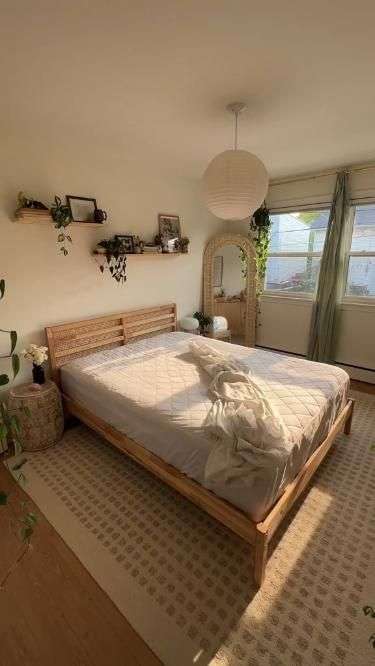A Bed That Makes Itself: The Future of Convenience
In the realm of household chores, making the bed often sits at the bottom of everyone’s list. It’s a mundane task that, despite its simplicity, can be easily forgotten or postponed in the rush of daily life. However, what if there was a solution that could alleviate this small but persistent annoyance?
Enter the concept of a self-making bed—a technological marvel designed to transform a messy heap of sheets into a neatly made bed with minimal human effort. This innovation isn’t just about convenience; it represents a blend of design, engineering, and a touch of everyday magic.
The Mechanics Behind It
The idea of a bed that makes itself might seem straight out of science fiction, but it’s rooted in practical innovations. Imagine a system of motorized components embedded within the bed frame or the mattress itself. Upon receiving a signal—perhaps triggered by a voice command or a scheduled time—the bed springs into action.
Sheets smoothly glide into position, pillows fluff themselves, and the duvet settles into place, all orchestrated by a series of carefully calibrated movements. Advanced sensors ensure that everything aligns perfectly, catering to individual preferences for firmness, tightness, or even the angle of the pillows.
Technology Meets Daily Life
The development of a self-making bed isn’t just about cutting down on a few minutes of morning routine; it represents the integration of smart technology into everyday objects. In an increasingly interconnected world, where smart homes are becoming the norm, this concept fits seamlessly into the broader ecosystem of automated living.
Imagine waking up to a bedroom that not only adjusts lighting and temperature to your liking but also presents you with a perfectly made bed—ready to start your day off right. It’s a small but significant step towards creating living spaces that adapt to our needs effortlessly.
Beyond Convenience
While convenience is undoubtedly a major draw, the implications of a self-making bed extend beyond just saving time. For those with physical limitations or mobility issues, this technology can enhance independence and comfort. Elderly individuals or people recovering from injury can benefit from the ability to maintain a tidy bed without assistance.
Moreover, in hospitality settings, where efficiency and guest satisfaction are paramount, a self-making bed could redefine the guest experience. Hotels could offer a seamless, luxurious stay where beds are magically made between room cleanings, enhancing both efficiency and guest satisfaction.
Challenges and Future Developments
Of course, like any emerging technology, there are challenges to overcome. The initial cost, maintenance requirements, and ensuring compatibility with different bed types are considerations that manufacturers must address. Additionally, perfecting the technology to accommodate various bedding materials and styles poses a technical challenge.
Looking ahead, future developments might include integration with AI assistants for more personalized experiences, or advancements in materials that facilitate easier manipulation by automated systems.
Conclusion
The concept of a bed that makes itself isn’t just a whimsical idea—it’s a glimpse into the future of home automation and personalized convenience. By seamlessly integrating technology into the fabric of our daily lives, these innovations promise to simplify tasks that once seemed mundane. Whether in our homes or in hospitality, the self-making bed represents a fusion of comfort, efficiency, and innovation—a small revolution in the way we experience and interact with our living spaces.






